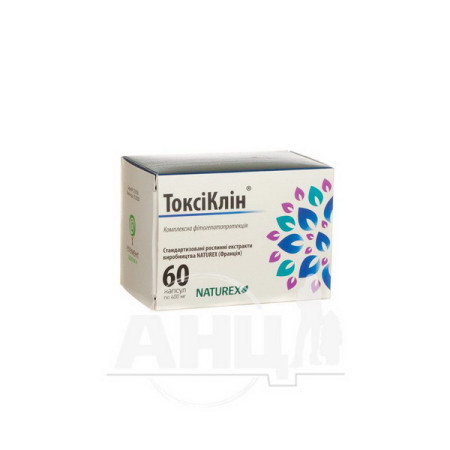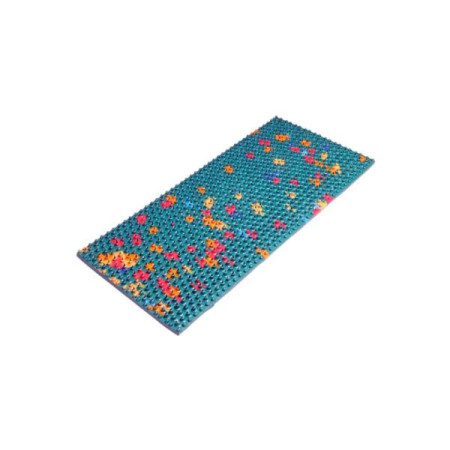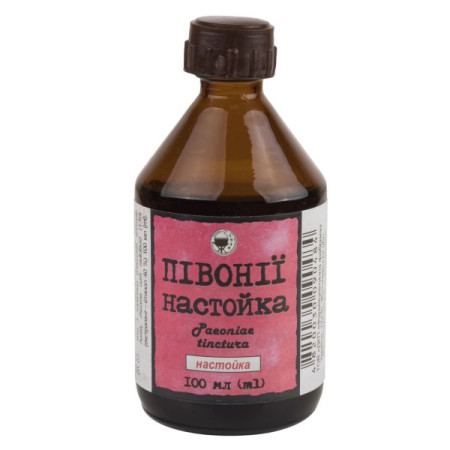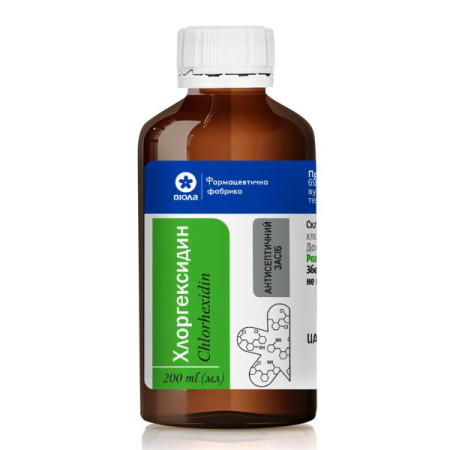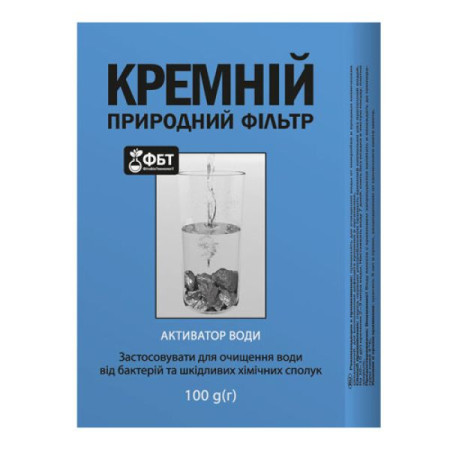Advagraf prolonged-release capsules 3 mg No. 50

Instructions for Advagraf prolonged-release capsules 3 mg No. 50
Composition
active substance: tacrolimus:
1 capsule contains tacrolimus (as crystalline hydrate) 0.5 mg or 1 mg, or 3 mg, or 5 mg;
excipients: hypromellose, ethylcellulose, lactose monohydrate, magnesium stearate; capsule shell: titanium dioxide (E 171), iron oxide yellow (E 172), iron oxide red (E 172), gelatin, sodium lauryl sulfate; printing ink (Opacode S-1-15013): shellac, lecithin (soy), simethicone, iron oxide red (E 172), giprolose.
Dosage form
Extended-release capsules.
Main physicochemical properties: 0.5 mg capsules: hard gelatin capsules No. 5, with a red inscription “0.5 mg” on the pale yellow capsule cap, and “647” on the orange capsule body. Capsule contents: white powder;
1 mg capsules: hard gelatin capsules No. 4, with a red inscription “1 mg” on the white capsule cap, and “677” on the orange capsule body. The contents of the capsules are white powder;
3 mg capsules: hard gelatin capsules No. 1, with a red inscription “3 mg” on the orange capsule cap and “637” on the orange capsule body. The contents of the capsules are white powder;
5 mg capsules: hard gelatin capsules No. 0, with a red inscription “5 mg” on the grayish-red capsule cap and “687” on the orange capsule body. The contents of the capsules are white powder.
Pharmacotherapeutic group
Immunosuppressant. Calcineurin inhibitor.
ATX code L04A D02.
Pharmacological properties
Pharmacodynamics.
At the molecular level, the effects and intracellular accumulation of tacrolimus are mediated by binding to a cytosolic protein (FKBP 12). The FKBP 12-tacrolimus complex specifically and competitively inhibits calcineurin, providing a calcium-dependent blockade of T-cell signaling pathways and preventing the transcription of a discrete set of lymphokine genes.
Tacrolimus is a highly potent immunosuppressant. In in vitro and in vivo experiments, tacrolimus clearly reduced the production of cytotoxic lymphocytes, which play a key role in the transplant rejection reaction. Tacrolimus inhibits the production of lymphokines (interleukin-2, -3, γ-interferon), T-cell activation, interleukin-2 receptor expression, and T-helper-dependent B-cell proliferation.
Pharmacokinetics.
Absorption
It has been established that tacrolimus is rapidly absorbed in the gastrointestinal tract in humans. Advagraf® (prolonged-release capsules) is a drug in a dosage form that provides prolonged absorption of tacrolimus in the gastrointestinal tract. The average time to reach Cmax is approximately 2 hours. Absorption of tacrolimus is variable (variability of absorption in adult patients is 6–43%). The bioavailability of tacrolimus when taken orally in the form of capsules is on average 20–25%. The bioavailability, as well as the rate and extent of absorption of tacrolimus when taken simultaneously with food, is reduced. The nature of biliary excretion does not affect the absorption of the drug. After reaching the equilibrium concentration of tacrolimus when taking Advagraf®, a high correlation is noted between AUC and minimum (C0) levels of tacrolimus in the blood. Therefore, monitoring of minimum (C0) concentrations of tacrolimus in the blood makes it possible to detect systemic exposure to the drug.
Distribution and elimination
The distribution of tacrolimus in humans after intravenous administration is biphasic. In the systemic circulation, tacrolimus binds well to erythrocytes.
The ratio of tacrolimus concentrations in whole blood to plasma is 20:1. A significant proportion of plasma tacrolimus (> 98.8%) is bound to plasma proteins (serum albumin, α-1-acid glycoprotein).
Tacrolimus is widely distributed in the body. The steady-state volume of distribution based on plasma concentrations is approximately 1300 l (in healthy volunteers) and based on whole blood concentrations, it averages 47.6 l.
Tacrolimus is a substance with low clearance. In healthy volunteers, the mean total clearance, calculated from whole blood concentrations, is 2.25 l/h. In adult patients after liver, kidney and heart transplantation, the clearance was 4.1 l/h, 6.7 l/h and 3.9 l/h, respectively. Low haematocrit and hypoproteinaemia contribute to an increase in the unbound fraction of tacrolimus, accelerating the clearance of tacrolimus. Corticosteroids used in transplantation may also increase the metabolic rate and accelerate the clearance of tacrolimus.
The elimination half-life of tacrolimus is long and variable. In healthy volunteers, the mean elimination half-life in whole blood is approximately 43 hours.
Metabolism and biotransformation
Tacrolimus is extensively metabolized in the liver, mainly by cytochrome P450-3A4 (CYP3A4) and cytochrome P450-3A5 (CYP3A5). Tacrolimus is extensively metabolized in the intestinal wall. Several metabolites of tacrolimus have been identified. In vitro experiments have shown that only one of the metabolites has immunosuppressive activity similar to that of tacrolimus. The other metabolites have weak or no immunosuppressive activity. Only one of the metabolites of tacrolimus has been detected in the systemic circulation at low concentrations. Thus, the pharmacological activity of the drug is practically independent of the metabolites.
Following intravenous and oral administration of 14C-labeled tacrolimus, the majority of radioactivity was recovered in the faeces. Approximately 2% of the radioactivity was recovered in the urine. Approximately 1% of tacrolimus was recovered unchanged in the urine and faeces. Thus, tacrolimus was almost completely metabolised before elimination; the main route of elimination was via the bile.
Indication
Prevention and treatment of liver and kidney allograft rejection in adult patients.
Treatment of allograft rejection resistant to standard immunosuppressive regimens in adult patients.
Contraindication
Hypersensitivity to tacrolimus, other macrolides or to any of the excipients.
Interaction with other medicinal products and other types of interactions
Metabolic interactions
Systemically available tacrolimus is metabolised in the liver by CYP3A4. There is also evidence of gastrointestinal metabolism by CYP3A4 in the intestinal wall. Concomitant administration of medicinal products or herbal preparations with established inhibitory or inducing effects on CYP3A4 may increase or decrease blood concentrations of tacrolimus, respectively. Similarly, withdrawal of such medicinal products or herbal preparations may affect the rate of metabolism of tacrolimus and, consequently, blood levels of tacrolimus.
Pharmacokinetic studies have shown that the increase in tacrolimus blood levels when co-administered with CYP3A4 inhibitors is mainly a result of increased oral bioavailability of tacrolimus due to inhibition of gastrointestinal metabolism. The effect on hepatic clearance is less pronounced.
It is strongly recommended to closely monitor tacrolimus blood levels under the supervision of a transplant specialist, to closely monitor graft function and QT prolongation (ECG), to monitor renal function and other adverse effects, including neurotoxicity, when concomitantly administered with substances that have the potential to alter CYP3A4, and, if necessary, to interrupt or modify the tacrolimus dose to maintain equivalent tacrolimus exposure (see sections 4.2 and 4.4).
Similarly, patients should be carefully monitored when tacrolimus is co-administered with multiple substances that affect CYP3A4, as the effect of tacrolimus may be potentiated or antagonized.
Medicinal products that affect the efficacy of tacrolimus are listed in the table below. The examples of interactions between medicinal products and individual substances are not intended to be exhaustive or comprehensive, therefore the instructions for use of each medicinal product used concomitantly with tacrolimus should be consulted for information on the metabolic pathway, possible interactions, potential risks and specific measures to be taken when considering concomitant use.
Drugs that affect the effectiveness of tacrolimus
Class or name Drugs/substances | Drug interaction effect | Recommendations for parallel use | |
| Grapefruit or grapefruit juice. | May increase tacrolimus trough blood concentrations and increase the risk of serious adverse reactions (e.g. neurotoxicity, QT prolongation) (see section 4.4). | Avoid consuming grapefruit or grapefruit juice. | |
| Cyclosporine. | May increase tacrolimus trough blood concentrations. In addition, synergistic/additive nephrotoxic effects may occur. | Concomitant use of ciclosporin and tacrolimus should be avoided (see section "Features of application"). | |
Agents that have nephrotoxic or neurotoxic effects: aminoglycosides, gyrase inhibitors, vancomycin, sulfamethoxazole + trimethoprim, NSAIDs, ganciclovir, acyclovir, amphotericin B, ibuprofen, cidofovir, foscarnet. | May enhance the nephrotoxic or neurotoxic effects of tacrolimus. | Concomitant use of tacrolimus with drugs known to be nephrotoxic should be avoided. If concomitant use cannot be avoided, monitor renal function and other adverse effects and adjust the tacrolimus dose if necessary. | |
Potent CYP3A4 inhibitors: antifungals (e.g. ketoconazole, itraconazole, posaconazole, voriconazole), macrolide antibiotics (e.g. telithromycin, troleandomycin, clarithromycin, josamycin), HIV protease inhibitors (e.g. ritonavir, nelfinavir, saquinavir), HCV protease inhibitors (e.g. telaprevir, boceprevir and the combination of ombitasvir and paritaprevir with ritonavir, with and without dasabuvir), nefazodone, the pharmacokinetic enhancer cobicistat and the kinase inhibitors idelalisib, ceritinib. A significant interaction was also observed with the macrolide antibiotic erythromycin. | Rapid and dramatic increases in tacrolimus levels may occur within 1-3 days of co-administration, despite immediate reduction of tacrolimus dose. Total tacrolimus exposure may increase more than 5-fold. Tacrolimus exposure may increase more than 50-fold with concomitant ritonavir combinations. Almost all patients may require a reduction in the dose of tacrolimus and temporary discontinuation of tacrolimus may also be necessary. The effect on tacrolimus blood concentrations may persist for several days after cessation of concomitant administration. | It is recommended to avoid concomitant use. If concomitant use of a strong CYP3A4 inhibitor cannot be avoided, consider not taking the tacrolimus dose on the day of initiation of the strong CYP3A4 inhibitor. Resume tacrolimus the following day at a reduced dose, depending on the tacrolimus blood concentration. Changes in both tacrolimus dose and/or dosing frequency should be individualized and adjusted as needed based on tacrolimus trough concentrations, which should be assessed at baseline, monitored frequently throughout (starting from the first few days) and reassessed at baseline and after discontinuation of the CYP3A4 inhibitor. After discontinuation, the appropriate tacrolimus dose and dosing frequency should be adjusted based on tacrolimus blood concentrations. Monitor renal function, QT prolongation (on ECG) and other possible adverse reactions. | |
Moderate or weak CYP3A4 inhibitors: antifungals (e.g. fluconazole, isavuconazole, clotrimazole, miconazole), macrolide antibiotics (e.g. azithromycin), calcium channel blockers (e.g. nifedipine, nicardipine, diltiazem, verapamil), amiodarone, danazol, ethinyl estradiol, lansoprazole, omeprazole, antivirals (for hepatitis C) elbasvir/grazoprevir and glecaprevir/pibrentasvir, antiviral (CMV) letermovir and tyrosine kinase inhibitors nilotinib, crizotinib, imatinib and (Chinese) herbal preparations containing extracts Schisandra sphenanthera. | May increase tacrolimus trough concentrations in whole blood and increase the risk of serious adverse reactions (e.g. neurotoxicity, QT prolongation) (see section 4.4). Rapid increases in tacrolimus levels may occur. | Monitor tacrolimus trough concentrations in whole blood starting from the first few days of concomitant use. If necessary, reduce the tacrolimus dose (see section 4.2). Monitor kidney function, QT prolongation (on ECG), and other possible side effects. | |
| In vitro studies have shown that the following substances are potential inhibitors of tacrolimus metabolism: bromocriptine, cortisone, dapsone, ergotamine, gestodene, lidocaine, mephenytoin, midazolam, nilvadipine, norethisterone, quinidine, tamoxifen. | May increase tacrolimus trough concentrations in whole blood and increase the risk of serious adverse reactions (e.g. neurotoxicity, QT prolongation) (see section 4.4). | Monitor tacrolimus whole blood trough concentrations and, if necessary, reduce the tacrolimus dose (see section 4.2). Monitor kidney function, QT prolongation (on ECG), and other possible side effects. | |
Strong CYP3A4 inducers: rifampicin, phenytoin, carbamazepine, apalutamide, enzalutamide, mitotane, or St. John's wort (Hypericum perforatum). | May reduce tacrolimus trough concentrations in whole blood and increase the risk of rejection (see section 4.4). The maximum effect on tacrolimus blood concentrations may be achieved 1-2 weeks after co-administration. The effect may persist 1-2 weeks after the end of treatment. | It is recommended that concomitant use be avoided. If this cannot be avoided, patients may require an increase in the tacrolimus dose. Changes in tacrolimus dose should be individualized and adjusted as needed based on tacrolimus trough concentrations, which should be assessed at the start of treatment, monitored frequently (starting within the first few days) and reassessed during and after discontinuation of the CYP3A4 inducer. Gradual adjustment of the tacrolimus dose may be necessary after discontinuation of the CYP3A4 inducer. Monitor graft function closely. | |
Moderate CYP3A4 inducers: metamizole, phenobarbital, isoniazid, rifabutin, efavirenz, etravirine, nevirapine; weak CYP3A4 inducers: flucloxacillin. | May reduce the trough concentration of tacrolimus in whole blood and increase the risk of rejection (see section "Special warnings and precautions for use"). | Monitor tacrolimus whole blood trough concentrations and increase the tacrolimus dose if necessary (see section 4.2). Monitor graft function closely. | |
Cannabidiol (P-gp inhibitor). | Tacrolimus and cannabidiol should be used with caution, with close monitoring for adverse effects. Monitor tacrolimus whole blood trough concentrations and adjust the tacrolimus dose if necessary (see sections 4.2 and 4.4). | ||
| Caspofungin |
| Monitor tacrolimus trough levels and increase tacrolimus dose if necessary (see Dosage and Administration). Monitor graft function closely. | |
| Agents known to have high affinity for plasma proteins, e.g. NSAIDs, oral anticoagulants, oral antidiabetic agents. | Tacrolimus is highly bound to plasma proteins. Possible interactions with other active substances that have a high affinity for plasma proteins should be considered. | Monitor tacrolimus whole blood trough concentrations and adjust tacrolimus dose as necessary (see section 4.2). | |
| Prokinetics: metoclopramide, cimetidine, and magnesium aluminum hydroxide. | May increase tacrolimus trough concentrations in whole blood and increase the risk of serious adverse reactions (e.g. neurotoxicity, QT prolongation). | Monitor tacrolimus whole blood trough concentrations and, if necessary, reduce the tacrolimus dose (see section 4.2). Monitor kidney function, QT prolongation (on ECG), and other adverse effects closely. | |
| Maintenance doses of corticosteroids. | May reduce tacrolimus trough concentrations in whole blood and increase the risk of transplant rejection (see section "Special warnings and precautions for use"). | Monitor tacrolimus whole blood trough concentrations and increase the tacrolimus dose if necessary (see section 4.2). Monitor graft function closely. | |
| High doses of prednisolone or methylprednisolone. | May affect blood levels of tacrolimus (increase or decrease) when used to treat acute rejection. | Monitor tacrolimus whole blood trough concentrations and adjust tacrolimus dose as necessary. | |
| Direct-acting antiviral therapy (DAA). | May affect tacrolimus pharmacokinetics due to changes in liver function during DAA therapy associated with HCV clearance. Decreased tacrolimus blood levels may occur. However, the CYP3A4 inhibitory potential of some DAAs may counteract this effect or result in increased tacrolimus blood levels. | Monitor tacrolimus whole blood trough concentrations and, if necessary, adjust the tacrolimus dose to ensure continued efficacy and safety. |
Concomitant use of tacrolimus with a mammalian target of rapamycin (mTOR) inhibitor (e.g. sirolimus, everolimus) may increase the risk of thrombotic microangiopathy (including haemolytic uraemic syndrome and thrombotic thrombocytopenic purpura) (see section 4.4).
Since treatment with tacrolimus may be associated with hyperkalaemia or may exacerbate existing hyperkalaemia, high potassium intake or potassium-sparing diuretics (e.g. amiloride, triamterene or spironolactone) should be avoided (see section 4.4). Caution should be exercised when tacrolimus is administered concomitantly with other agents that increase serum potassium levels, such as trimethoprim and co-trimoxazole (trimethoprim/sulfamethoxazole), as trimethoprim is known to act as a potassium-sparing diuretic like amiloride. Close monitoring of serum potassium is recommended.
Effect of tacrolimus on the metabolism of other drugs
Tacrolimus is a known inhibitor of CYP3A4, therefore concomitant use of tacrolimus with medicinal products metabolised by CYP3A4 may affect the metabolism of such medicinal products.
The half-life of ciclosporin is prolonged when tacrolimus is administered concomitantly. In addition, a synergistic effect/additive nephrotoxic effect is possible. For these reasons, the combined administration of ciclosporin and tacrolimus is not recommended, and the physician should exercise caution when prescribing tacrolimus to patients who have previously received ciclosporin (see sections “Method of administration and dosage” and “Special warnings and precautions for use”).
For tacrolimus, it has been shown that this drug can cause an increase in phenytoin blood levels.
Since tacrolimus may reduce the therapeutic range of hormonal contraceptives, which usually results in increased hormonal exposure, special attention and caution should be exercised when deciding on contraceptive methods. There is currently insufficient information on the interaction between tacrolimus and statins. Clinical data suggest that the pharmacokinetics of statins are not significantly altered when co-administered with tacrolimus.
Animal studies have shown that tacrolimus can potentially reduce the clearance and increase the half-life of pentobarbital and antipyrine.
Caution should be exercised when switching patients receiving combination therapy with ciclosporin (which affects the enterohepatic recirculation of mycophenolic acid) to tacrolimus, which does not have this effect, as this may lead to changes in the exposure of mycophenolic acid. Drugs that affect the enterohepatic cycle of mycophenolic acid may reduce plasma levels and efficacy of mycophenolic acid.
When switching from ciclosporin to tacrolimus or vice versa, it may be appropriate to monitor the therapeutic effect of mycophenolic acid.
Immunosuppressants may affect the response to vaccination, therefore vaccination may be less effective during treatment with tacrolimus. The use of live attenuated vaccines should be avoided (see section 4.4).
Application features
Medication errors have been reported, including accidental, unintentional or uncontrolled substitution of immediate-release or prolonged-release tacrolimus formulations. This may lead to serious adverse reactions, including graft rejection, or other adverse reactions that may be due to either insufficient or excessive exposure to tacrolimus. Patients should receive a single formulation of tacrolimus with the appropriate daily dosing regimen; changes in formulation or regimen should only be made under the close supervision of a transplant specialist (see sections 4.2 and 4.8).
Advagraf® is not recommended for use in children due to limited data on safety and/or efficacy in this patient population.
There are no clinical data on the use of Advagraf® prolonged-release in adult patients with rejection refractory to therapy with other immunosuppressants.
There are currently no clinical data on the use of Advagraf® for the prevention of graft rejection in heart transplantation.
In the initial post-transplant period, the following parameters should be regularly monitored: blood pressure, ECG, neurological and visual status, fasting blood glucose, electrolyte concentrations (especially potassium), liver and kidney function, hematological parameters, coagulation profile, and blood protein levels. In the presence of clinically significant changes, correction of immunosuppressive therapy is necessary.
Substances with interaction potential
CYP3A4 inhibitors or inducers should only be used with tacrolimus after consultation with a transplant specialist due to the potential for drug interactions leading to serious adverse reactions, including rejection or toxicity (see section 4.5).
CYP3A4 inhibitors
Concomitant use with CYP3A4 inhibitors may increase tacrolimus blood levels, which may lead to serious adverse reactions including nephrotoxicity, neurotoxicity and QT prolongation. It is recommended to avoid concomitant use of potent CYP3A4 inhibitors (such as ritonavir, cobicistat, ketoconazole, itraconazole, posaconazole, voriconazole, telithromycin, clarithromycin or josamycin) with tacrolimus. If therapy cannot be avoided, tacrolimus blood levels should be monitored starting from the first few days of concomitant use under the supervision of a transplant specialist, in order to adjust the tacrolimus dose as necessary to maintain consistent tacrolimus exposure. Renal function, ECG including QT interval and the patient's clinical status should also be closely monitored.
Dose adjustment should be based on the individual clinical situation of each patient. An immediate dose reduction may be necessary at the beginning of treatment (see section 4.5).
Similarly, discontinuation of CYP3A4 inhibitors may affect the rate of metabolism of tacrolimus, leading to subtherapeutic levels of tacrolimus in the blood, and therefore this situation requires close monitoring and supervision by a transplant specialist.
CYP3A4 inducers
Concomitant use with CYP3A4 inducers may decrease tacrolimus blood levels, potentially increasing the risk of transplant rejection. It is recommended to avoid concomitant use of strong CYP3A4 inducers (such as rifampicin, phenytoin, carbamazepine) and tacrolimus. If this cannot be avoided, tacrolimus blood levels should be monitored frequently, starting from the first few days of concomitant use, under the supervision of a transplant specialist, in order to adjust the tacrolimus dose if necessary, in order to maintain the same tacrolimus exposure. Graft function should also be closely monitored (see section 4.5).
Similarly, discontinuation of CYP3A4 inducers may affect the rate of metabolism of tacrolimus, leading to supratherapeutic blood levels of tacrolimus, and therefore requires close monitoring and supervision by a transplant specialist.
Caution should be exercised when tacrolimus is co-administered with agents that inhibit P-glycoprotein, as increased tacrolimus levels may occur. Tacrolimus whole blood levels and the patient's clinical status should be closely monitored. Tacrolimus dose adjustment may be necessary (see section 4.5).
Herbal preparations
When using Advagraf®, herbal preparations containing St. John's wort (Hypericum perforatum) should be avoided due to the risk of interactions leading to a decrease in tacrolimus blood levels and the therapeutic effect of Advagraf®.
Other interactions
The concomitant use of cyclosporine and tacrolimus should be avoided, and tacrolimus should be used with caution in patients who have previously received cyclosporine (see sections “Method of administration and dosage” and “Interaction with other medicinal products and other types of interactions”).
Avoid taking medications/products containing high amounts of potassium or potassium-sparing diuretics (see section “Interaction with other medicinal products and other types of interactions”).
Concomitant use of tacrolimus with medicinal products known to be nephrotoxic or neurotoxic may increase the risk of nephrotoxic and neurotoxic reactions (see section 4.5).
Vaccination
Immunosuppressants may affect the response to vaccination, vaccination may be less effective during treatment with tacrolimus. Live attenuated vaccines should be avoided.
Nephrotoxicity
In transplant patients, tacrolimus may lead to renal impairment. Acute renal failure without active intervention may progress to chronic renal failure. Patients with renal impairment should be closely monitored as a reduction in the tacrolimus dose may be required. The risk of nephrotoxicity may be increased by concomitant use of tacrolimus with drugs associated with nephrotoxicity (see section 4.5). Concomitant use of tacrolimus with drugs known to be nephrotoxic should be avoided. If concomitant use cannot be avoided, tacrolimus blood levels and renal function should be closely monitored and dose reduction considered in the event of nephrotoxicity.
Gastrointestinal disorders
Gastrointestinal perforations have been reported in patients receiving tacrolimus. Gastrointestinal perforation is a medically important complication that can be life-threatening. Appropriate treatment should be initiated immediately if suspicious symptoms occur.
Tacrolimus blood levels may vary significantly in the presence of diarrhoea; careful monitoring of tacrolimus blood concentrations is necessary if diarrhoea occurs.
Heart disease
Cases of ventricular hypertrophy or septal hypertrophy of the heart, which have been reported as cardiomyopathies, have been rare but have been observed in patients taking Prograf and are therefore possible with Advagraf® treatment. In most cases, myocardial hypertrophy was reversible and occurred at tacrolimus blood concentrations exceeding the maximum recommended levels. Other factors that increase the risk of this adverse event include: pre-existing cardiac disease, use of corticosteroids, hypertension, renal and hepatic dysfunction, infections, hypervolemia, edema. Patients at high risk and receiving intensive immunosuppressive therapy should be monitored with echocardiography and ECG before and after transplantation (after 3 months and then after 9-12 months). If abnormalities are detected, consideration should be given to reducing the dose of Advagraf® or replacing the drug with another immunosuppressant.
Tacrolimus may prolong the QT interval and cause torsades de pointes. Caution should be exercised when used in patients with risk factors for QT prolongation, including patients with individual or hereditary QT prolongation, patients with congestive heart failure, bradyarrhythmia, electrolyte abnormalities. Caution should be exercised in patients with known or suspected congenital long QT syndrome or acquired long QT and in patients taking concomitant medicinal products known to prolong the QT interval, including electrolyte abnormalities or known elevations of electrolytes (see section 4.5).
Patients treated with tacrolimus may develop post-transplant lymphoproliferative diseases (PTLD) associated with Epstein-Barr virus (EBV) (see section "Adverse effects"). The risk of developing post-transplant lymphoproliferative diseases (PTLD) associated with Epstein-Barr virus (EBV) is increased when immunosuppressants with antilymphocyte antibodies (such as basiliximab, daclizumab). There is also evidence of an increased risk of lymphoproliferative disorders in patients with negative EBV-VCA (viral capsid antigen). Therefore, before prescribing Advagraf® to this group of patients, serological testing for EBV-VCA should be performed. Careful monitoring of EBV by polymerase chain reaction (PCR) is recommended during treatment. A positive EBV-PCR can persist for months and is not in itself evidence of PLD or lymphoma.
As with other potent immunosuppressive agents, the risk of secondary cancer is unknown (see section 4.8).
As with other immunosuppressive drugs, due to the potential risk of skin malignancies, exposure to sunlight and ultraviolet radiation should be limited, protective clothing should be worn, and sunscreen with a high protection factor should be used.
Infections, including opportunistic infections
Patients receiving immunosuppressants, including Advagraf®, are at increased risk of developing opportunistic infections (bacterial, fungal, viral and protozoal), especially CMV infection, BK virus nephropathy and JC virus multifocal leukoencephalopathy (PML). Patients are also at increased risk of developing infectious viral hepatitis (e.g. reactivation of hepatitis B and C and/or new infection, and hepatitis E, which may become chronic). These infections are often associated with a high overall immunosuppressive burden and may result in serious or fatal outcomes, including transplant rejection, which should be considered by physicians when considering the differential diagnosis in immunocompromised patients with worsening liver or kidney function or neurological symptoms. Prevention and treatment should be in accordance with current clinical guidelines.
Thrombotic microangiopathy (TMA) (including hemolytic uremic syndrome (HUS) and thrombotic thrombocytopenic purpura (TTP))
The diagnosis of TMA, including thrombotic thrombocytopenic purpura (TTP) and hemolytic uremic syndrome (HUS), which sometimes leads to renal failure or death, should be considered in patients with hemolytic anemia, thrombocytopenia, fatigue, fluctuating neurological manifestations, renal dysfunction, and fever. If TMA is diagnosed, immediate treatment is required, and at the discretion of the physician, discontinuation of tacrolimus should be considered.
Concomitant use of tacrolimus with a mammalian target of rapamycin (mTOR) inhibitor (e.g. sirolimus, everolimus) may increase the risk of thrombotic microangiopathy (including haemolytic uraemic syndrome and thrombotic thrombocytopenic purpura).
Posterior reversible encephalopathy syndrome (PRES)
Posterior reversible encephalopathy syndrome (PRES) has been reported in patients treated with tacrolimus. If patients taking tacrolimus develop symptoms of PRES, such as headache, altered mental status, seizures, and visual disturbances, appropriate diagnostic procedures (e.g. MRI) should be performed. If PRES is diagnosed, systemic tacrolimus should be discontinued immediately, and blood pressure and seizures should be adequately monitored. Most patients recovered fully with appropriate treatment.
Vision impairment
Visual disturbances, sometimes progressing to loss of vision, have been reported in patients receiving tacrolimus. In isolated cases, resolution of the problem has been reported.
There are no reviews for this product.
There are no reviews for this product, be the first to leave your review.
No questions about this product, be the first and ask your question.






